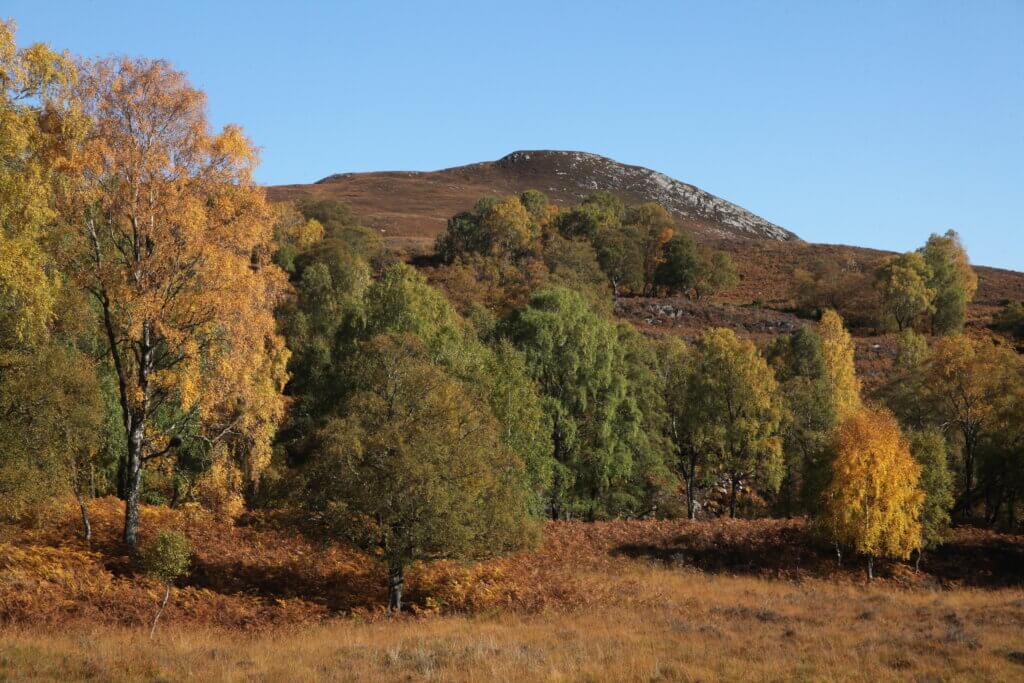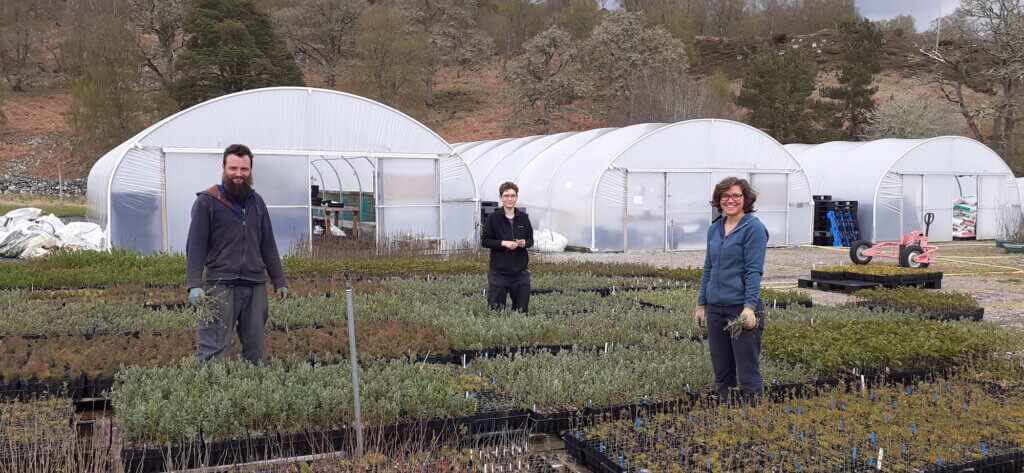Volunteers isolate at Highlands ‘lost world’ to save thousands of young trees

A team of six people from Trees for Life have been voluntarily isolating themselves at the charity’s flagship Dundreggan rewilding estate in Glenmoriston, near Loch Ness in the Highlands since 23 March – to save more than 100,000 native young trees from being lost due to the coronavirus crisis lockdown.
The trees – including Scots pine, rowan, juniper, hazel, holly and oak, as well as rare mountain species such as dwarf birch and woolly willow – have all been grown carefully from seed in Dundreggan’s specialised nursery, and were due for planting out on the hills this spring.
Dozens of volunteers help to propagate and grow over 60,000 trees a year at the nursery, from seed collected across the estate. These trees are then planted out at Dundreggan and other Highland sites to restore Scotland’s ancient Caledonian Forest and its unique wildlife.
“We were all set for another busy season of preparing thousands of young native trees for planting on the hills by our volunteers, when the coronavirus crisis forced the postponement of this spring’s tree planting – meaning tens of thousands of young trees have not left our nursery as planned,” said Doug Gilbert, Trees for Life’s Dundreggan Manager.
“But nature isn’t in lockdown. All these precious trees have been coming into leaf, and we need to take care of them – especially in the dry weather we’ve been having. Without regular watering, they would all die. We also needed to start sowing new seed now, to ensure a supply of trees for future planting seasons.”
So Doug – with colleagues Abbey Goff, Emma Beckinsale, Patrick Fenner, and trainees Catriona Bullivant and Louise Cameron – opted to voluntarily isolate themselves at Dundreggan rather than at their homes when the national lockdown was announced.

Doug and his colleagues aren’t leaving Dundreggan except for a few essential reasons, such as collecting prescriptions. Food is arriving at the rewilding estate via supermarket deliveries.
Doug added: “The local Redburn Cafe has started local takeaways, so they’re an occasional treat! No one has visited us for weeks now, except for delivery drivers and the postie. We’re here in isolation for the long-haul if needs be – together with a growing forest for the future.”
Trees for Life plans to open the world’s first rewilding centre at Dundreggan in 2022. This is expected to welcome over 50,000 visitors annually – allowing people to explore the wild landscapes, discover Gaelic culture, and learn about the region’s unique wildlife including golden eagles, pine martens and red squirrels.
As well as being an internationally important forest restoration site, Dundreggan is a biodiversity hotspot that is home to over 4,000 plant and animal species. Discoveries include several species never recorded in the UK before, or previously feared extinct in Scotland.
Trees for Life is dedicated to rewilding the Scottish Highlands. So far its volunteers have established nearly two million native trees at dozens of sites, encouraging wildlife to flourish and helping communities to thrive. See www.treesforlife.org.uk.
Ends
[registration_form]
Brilliant, true dedication to a very worthwhile project. Hats off to them well done indeed.
True conservationists.
I will contribute the price of a couple of takeaways, and look forward to visiting the new centre.
Trapit – I notice that’s your 400th comment here – thank you. You are often a breath of fresh air.
“True conservationists”
Yes indeed. Maintenance of indigenous genetic diversity in this way is of underestimated importance IMHO and I have bad daydreams about the consequences of importing vast numbers of seed and cloned stocks because EC rules forbade their exclusion.
It’s also tragic that it will take this Band of Heroes 250 years to replace the numbers of trees felled in Scotland to make space for windmills.
Yes, well, after my first comment (Egdon Heath i think) did not merit a ” welcome for your first contribution here”, leaving me mentally scarred, i wondered whether i should continue, but i am pretty thick
skinned.
A useful trait over the years I have found.
Trapit – actually the comment on Egdon Heath was your second comment. Your first was in July 2014 about an interview with Terry Pickford. Thank you for that comment and most of the others. Have you read Inglorious yet? Your third comment was that you would wait until it was remaindered before reading it. It still has not been remaindered – it has sold out of two editions.
I stand corrected, time flies.
Inglorious has yet to grace my bookshelves , but it has certainly done what you intended, and more.
Well done to the guys at Trees for Life. You are doing a great job. Thank you
Well done to these folks. I’m glad they mentioned the dry weather too, apart from one night of showers we’ve had no rain here since mid march. The river is already down to a trickle over the bare pebbles.
With both the floods at the beginning of the year and the lack of rain now the extensive re establishment of the beaver would have shown its worth twice over by now in Scotland. I wonder how many of the pitifully few beaver we do have, like hen harriers on grouse moor, have ‘disappeared’.
The beaver will never be secure in Scotland until we get it established below the M8 line, we all know it. The areas around Hamilton, Kilmarnock, and even Kelvinbridge in Glasgow would be the perfect areas for a new release. I mean, of course, legally somehow. But if they did turn up in those areas then they’d be secure anyway.